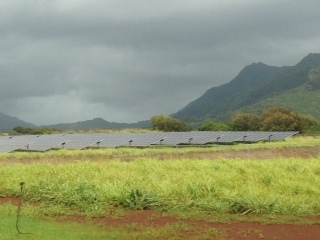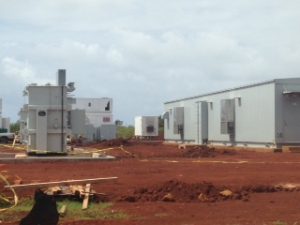There are a lot of benefits to living in Hawaii: great weather, long beaches, and the sight of the beautiful Pacific Ocean at almost every turn, to name a few. Yet there are drawbacks, as well.
A big downside to living in Hawaii is the cost of electricity. As you may or may not know, Hawaii is the most expensive state in the U.S. in terms of average annual electricity cost, running 200 to 400 percent higher than other states.
So naturally, as a resident of the Aloha State, my interest turned to solar power as a means to lower my utility costs, not to mention reducing my carbon footprint. Solar power in Hawaii seemed like a no brainer.
The company I chose to go into partnership with presented me with a business model that was too good to pass up. I didn’t have to invest a single dime – the company owns, installed, and provides maintenance for the eight solar panels currently on my roof, for the life of the panels. It was they, not me, who also paid for costs including permitting, inspection, and connection to the grid.
All I do is simply use the electricity generated from the panels, at half of the cost I was previously paying. Any energy not used during the day that my system overproduces goes back to Kauai’s electrical grid, where it can be resold to another customer in my neighborhood. I have a smart meter where I can track usage costs daily, if I so chose. Offers like these, where households pay nothing up front, are undoubtedly driving up residential use of solar panels across the country. Forecasts predict that by 2020, between 900,000 and 3.8 million homes could have solar panels in the U.S.
I found about the company through a grass roots campaign, when somebody actually knocked on my door to tell me about it. They were friendly, extremely knowledgeable, and easy to talk to. Once I expressed interest, what followed was some of the best customer communication that I have ever experienced. Every single step of the way I was emailed with a detailed explanation of exactly what to expect. From my “welcome” email to kicking off my system design, to scheduling my installation to my system inspection notification, I was always fully aware of what to expect, and when to expect it.
This really drove home a point to me: the importance of customer communications to building a company’s brand. Even though every single item in the process didn’t go exactly as planned (sometimes inspections and other items are delayed or need to be rescheduled, for example), my expectations were always set through constant communication by the home office.
I liken this to my own company, Interprose. We take pride on consistent and reliable client communications. It is what makes our clients really appreciate us and helps build our own brand. And yes, in our line of work, things don’t always go as planned – circumstances are sometimes just out of our control. What we CAN control however, is how often we communicate with our clients to help set expectations, guide them to their desired outcomes, and achieve their goals.
Here’s a quick snapshot of some of Hawaii’s solar installations:

My dog in front of the solar array and storage system currently being built in Anahola, Kauai. A cloudy day such as the one in the pictures is a perfect day for the battery storage system to be in use.
There are two major solar projects underway in Kauai, listed below. Once completed, Kauai will have one of the highest percentages of photovoltaic power of any utility in the United States, and half of Kauai’s daytime needs will be met by solar power. Techniques for connecting solar and other distributed-generation technologies are informed by the IEEE Standards Association (IEEE-SA). One standard in particular, IEEE 1547, Standard for Interconnecting Distributed Resources with Electric Power Systems, is quite relevant in that it is the standard that provides the requirements for how renewable energy sources are connected to the grid.
Kauai Island Utility Co-Op (KIUC) runs Kauai’s electrical grid. KIUC’s goal is to generate 37 percent of its daytime electricity with renewable resources by the end of 2015, and a lofty 50 percent 2023. According to estimates, this would mean a reduction of oil consumption here by approximately 1.7 million gallons per year. Needless to say, locally produced solar power will be more reliable than fuel shipped from the mainland. This means that Kauai’s ability to restore power quickly and efficiently after a natural disaster, such as a hurricane, will increase dramatically with the increase in solar power usage.
Koloa, on Kauai’s sunny south shore: Officially running since September 2014, this 67-acre a 12-megawatt solar farm built on a former sugar cane field contains more than 45,000 solar panels. Its goal is to produce enough electricity to power approximately 4,000 homes.
Anahola, on Kauai’s east side: Also a 12-megawatt solar farm, this 60-acre site with 59,000+ solar panels, is the largest in the state of Hawaii, with output slightly higher than the one in Koloa. Also under construction is a substation that will feed electricity from the array into the grid, along with a lithium-ion battery storage system. The system will be able to store 6 megawatts of power that can be used when bad weather reduces output from the array.
Solar power is gaining popularity everywhere because it is easy on the budget when getting started, reduces utility costs, is environmentally friendly, provides local “energy independence”, and offers the ability to more quickly restore power after a natural disaster. Yet even with all of those benefits, one mustn’t forget the need for exceptional customer communications, as it is a critical piece to consumer satisfaction and to achieving greater consumer adoption of solar power.


